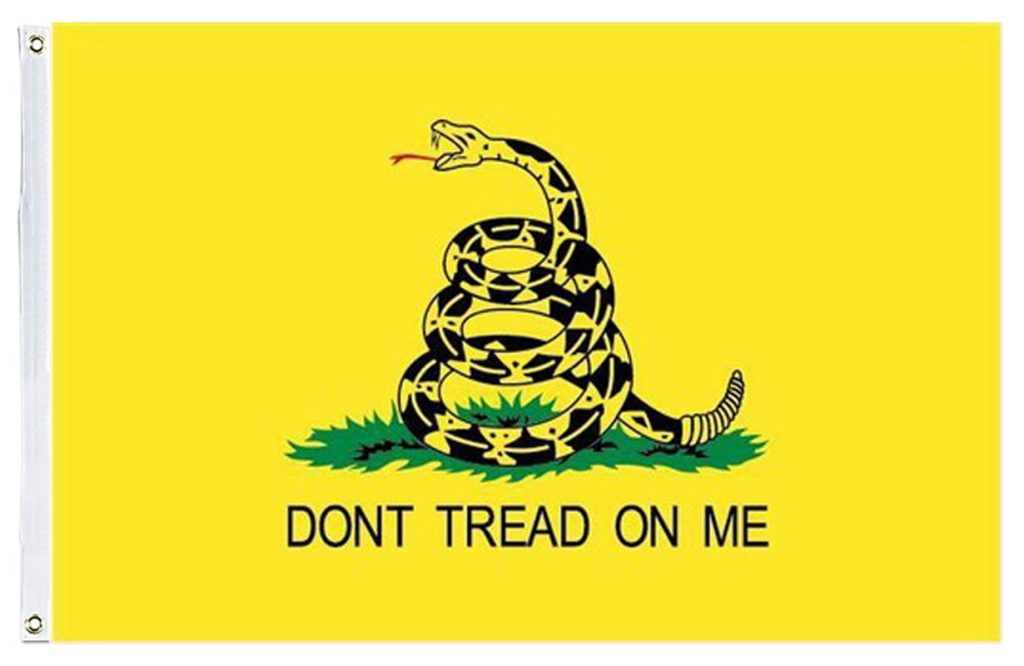News
Tensions Rise as 12-Year-Old Boy is Dismissed from School Due to ‘Don’t Tread on Me’ Patch
In a recent incident that has stirred controversy, a 12-year-old boy named Jaiden was unexpectedly taken out of his classroom at The Vanguard School, a charter school nestled in the heart of Colorado Springs, Colorado. His apparent crime? Wearing a patch emblazoned with the iconic Gadsden flag—an emblem deeply intertwined with the spirit of the American Revolution.
Meet 12yo Jaiden who was kicked out of class yesterday in Colorado Springs for having a Gadsden flag patch, which the school claims has "origins with slavery."
The school's director said via email that the patch was "disruptive to the classroom environment."
Receipts in the 🧵 pic.twitter.com/qQ8jK1zSpR
— Connor Boyack 📚 (@cboyack) August 29, 2023
The school’s administration justified their action by attributing the flag’s origins to slavery and its associations with divisive ideologies. They characterized it as a conduit for white supremacy and associated it with particular political groups. This decision by the school quickly set off a chain reaction, drawing Jaiden’s mother, Eden Rodriguez, into the fray. She staunchly contested the school’s stance, maintaining that the flag was far from a symbol of bigotry, but rather an emblem of resilience against oppression and autocracy.

Rodriguez’s impassioned confrontation with the school official was captured on video and promptly went viral, sparking a nationwide discourse on the matter.
Unveiling the Gadsden Flag: The Gadsden flag, a vivid yellow banner adorned with a coiled rattlesnake and the defiant phrase “Don’t tread on me,” made its debut back in 1775. Christopher Gadsden, a stalwart colonel in the Continental Army and a delegate to the Second Continental Congress, crafted it with the intent of rallying spirits during the Revolutionary War. Over time, it has metamorphosed into a potent emblem not only for the Tea Party movement but also for libertarian and conservative factions. Symbolizing an unyielding commitment to liberty and a resolute resistance against tyranny, the flag continues to evoke a powerful sense of independence.

Navigating the Legal and Moral Quagmire: The school’s dress code prohibits attire or accessories that might disrupt the learning environment or endorse unlawful conduct, violence, substance abuse, or hate speech. According to the school’s interpretation, the Gadsden flag patch contravened this policy by causing offense to a subset of students and staff members who perceived it as a symbol of hostility.
The Gadsden flag is a proud symbol of the American revolution and a iconic warning to Britain or any government not to violate the liberties of Americans. It appears on popular American medallions and challenge coins through today and Ben Franklin also adopted it to symbolize the… pic.twitter.com/sroNXnlJsf
— Jared Polis (@jaredpolis) August 29, 2023
Jaiden’s mother ardently maintained that the school’s actions violated her son’s First Amendment rights—the rights safeguarding freedom of expression—by effectively stifling his political viewpoints and misconstruing the flag’s significance. She further alleged that the school was unfairly sidelining her son’s perspective while advancing its own political agenda.
Legal experts have weighed in, suggesting that the school might have exceeded its jurisdiction by outlawing the Gadsden flag patch without substantial evidence of widespread disruption or harm. It’s worth noting that precedent indicates students maintain their constitutional rights while at school, unless their expressions interfere demonstrably with the institution’s educational mission or infringe upon the rights of others.
As this incident takes center stage in the ongoing debate surrounding free speech and individual expression within educational settings, its ramifications could extend well beyond the confines of this particular school.




